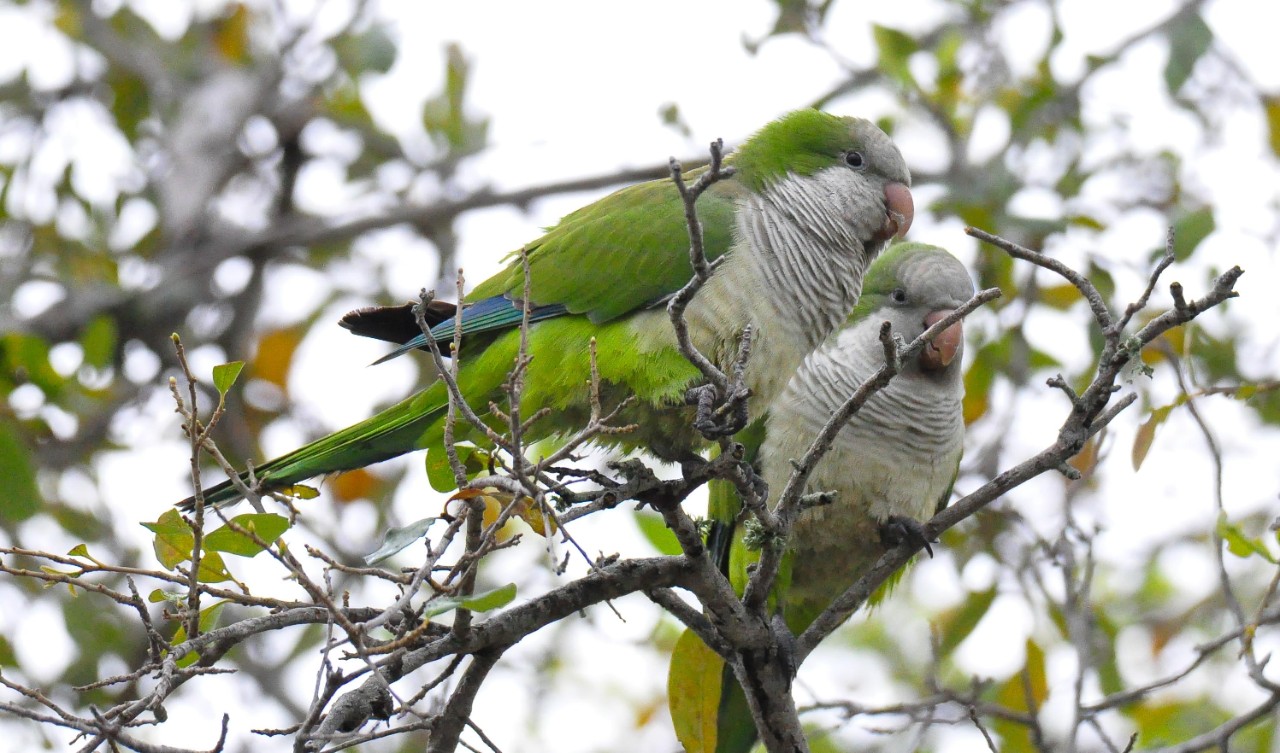
Scientific American: Parrots are taking over the world
UC researcher explains why parrots are so adaptable
Scientific American turned to a University of Cincinnati researcher to explain what makes parrots so adaptable, particularly in cities they share with people.
According to the magazine, at least 60 of the world's 380 parrot species have breeding populations outside their historic geographic range. These transplants are thriving in new places where they have learned to adapt.
“They're animals that are really social. They live in cognitively complex social environments,” Grace Smith-Vidaurre, a postdoctoral fellow at the University of Cincinnati, told Scientific American. “They're like humans in a lot of ways.”
Smith-Vidaurre studies birds in UC Assistant Professor Elizabeth Hobson's lab.
Monk parakeets, in particular, have adapted to city life in places like Chicago, New Jersey, and Brooklyn, New York. They were introduced to the United States from South America through the pet trade.
So far, concerns that monk parakeets would become an agricultural pest in the United States have not come true. Instead, they seem to enjoy city life.
Now Smith-Vidaurre is comparing the vocalizations of the U.S. birds to those found in their native South America. She found that the calls made by birds living in this noisy city soundscape are less complex than those found in South America.
“Something about their environment might be constraining their ability to produce or perceive these vocal signatures,” she says.
Read the Scientific American story.
Featured image at top: Monk parakeets perch in a tree in Cape Coral, Florida. These nonnative, invasive species are thriving in many cities across the United States. Photo/Michael Miller
More UC biology in the news

UC Assistant Professor Elizabeth Hobson works with a parakeet in a flight cage in Florida. Photo/Provided
Related Stories
History Department Lecture
January 9, 2002
Lecture by Allan W. Winkler, Miami University, Oxford on "Urban America in World War II: Cincinnati as an example" at the Cincinnati Museum Center at 7:30pm.
UC Research Ranking Climbs
January 10, 2002
The University of Cincinnati moved up in two different national rankings established by the National Science Foundation (NSF) to compare college and university research efforts.
History Department Lecture
January 17, 2002
Lecture by Leslie Adelson, Cornell University, will deliver a Taft lecture titled "Back to the Future and Beyond 'Two Worlds':Turkish Lines of Thought in Contemporary German Literature and Memory Work" at 3:00pm in the Max Kade German Cultural Center in Old Chemistry.
New Appointments in McMicken Administration
January 21, 2002
The college is very pleased to announce two new appointments.
Sign Up for the Discovering A&S Elective
January 24, 2002
Parent's Asking, "What does someone do with THAT major?" Don't know all your options? Sign up for a 2 credit hour elective where you can meet A&S faculty, emeriti faculty, as well as, alumni.
Three of Four UC Fulbrights Scholars from McMicken
January 28, 2002
Tainted water supplies in Bangladesh, international security and missile defense, transformations in Mexico and greater understanding of India - this varied list sums up the work of four Fulbright Scholars at the University of Cincinnati who are concentrating on real-life issues involving our neighbors around the world.
Prominent Line-Up Examines Race in 2002 Ropes Series
January 31, 2002
The issue of race will receive one of the most intensive examinations undertaken in Cincinnati since the April riots when the University of Cincinnati Department of English launches its Ropes series in January and February 2002.
Nominate a Distinguished Alumni
January 31, 2002
The Purpose of the Distinguished Alumni Awards is to recognize graduates of the McMicken College of Arts and Sciences for outstanding achievements.
UC Physicists Play Important Role in Experiments That Provided New Understanding of Neutrinos
January 31, 2002
Three physicists at the University of Cincinnati played a key role in recent experiments which provided a surprising new understanding of a tiny subatomic particle known as the neutrino.
Angelene Jamison-Hall: Publishing Award
February 13, 2002
An unpublished novel by Angelene Jamison-Hall won first place in the new writing contest sponsored by River View Publishing in Riverside, Iowa.
